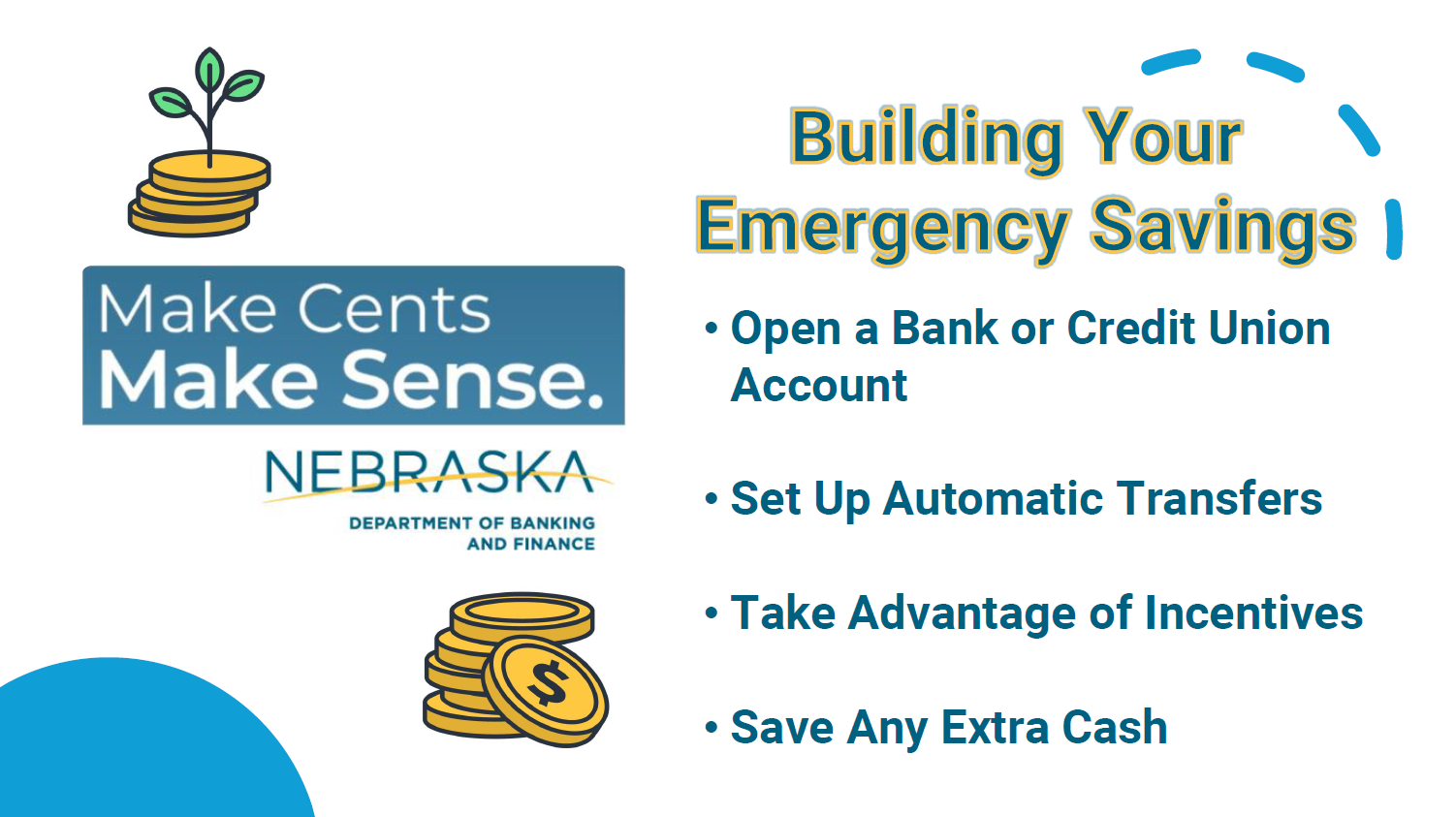
Most of us should have at least three to six months of living expenses in a liquid, no-risk financial product, like a savings account at a bank or credit union.
An easily accessible emergency fund provides a safety net to let us pay for large, unexpected expenses – like medical bills or car repairs – or to withstand a reduction in income or loss of a job.
Even $500 set aside can make a difference in an emergency – and could keep you from needing to use credit cards or loans when life happens.
Where to Keep Your Emergency Fund
Your emergency fund should be:
-
Easily accessible (but not too easy to spend)
-
Separate from your daily checking account
-
In a safe, interest-earning account
This is where local community banks and credit unions can help. Both focus on personal relationships, often offering higher savings rates, lower fees, and more personalized service.
How to Build Your Emergency Fund
-
Open an Account at a Bank or Credit Union. Look for a community bank or credit union in Nebraska that offers competitive interest rates on savings accounts.
-
Set Up Automatic Transfers. Start small and gradually increase the savings amount as you are able.
-
Take Advantage of Incentives. Some institutions offer new account bonuses or match your savings up to a certain amount.
-
Save Any Extra Cash. Think tax refunds, work bonuses, or even money from a side job. Extra funds from these sources can give your emergency fund a real boost.
Your emergency fund is more than just money – it’s peace of mind. And by working with local institutions, you can grow your savings with the help of people who genuinely care about your financial well-being.
